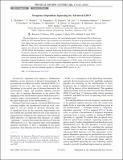| dc.contributor.author | McCuller, L | |
| dc.contributor.author | Whittle, C | |
| dc.contributor.author | Ganapathy, D | |
| dc.contributor.author | Komori, K | |
| dc.contributor.author | Tse, M | |
| dc.contributor.author | Fernandez-Galiana, A | |
| dc.contributor.author | Barsotti, L | |
| dc.contributor.author | Fritschel, P | |
| dc.contributor.author | MacInnis, M | |
| dc.contributor.author | Matichard, F | |
| dc.contributor.author | Mason, K | |
| dc.contributor.author | Mavalvala, N | |
| dc.contributor.author | Mittleman, R | |
| dc.contributor.author | Yu, Haocun | |
| dc.contributor.author | Zucker, ME | |
| dc.contributor.author | Evans, M | |
| dc.date.accessioned | 2021-10-27T20:29:53Z | |
| dc.date.available | 2021-10-27T20:29:53Z | |
| dc.date.issued | 2020 | |
| dc.identifier.uri | https://hdl.handle.net/1721.1/135907 | |
| dc.description.abstract | © 2020 authors. The first detection of gravitational waves by the Laser Interferometer Gravitational-Wave Observatory (LIGO) in 2015 launched the era of gravitational-wave astronomy. The quest for gravitational-wave signals from objects that are fainter or farther away impels technological advances to realize ever more sensitive detectors. Since 2019, one advanced technique, the injection of squeezed states of light, is being used to improve the shot-noise limit to the sensitivity of the Advanced LIGO detectors, at frequencies above ∼50 Hz. Below this frequency, quantum backaction, in the form of radiation pressure induced motion of the mirrors, degrades the sensitivity. To simultaneously reduce shot noise at high frequencies and quantum radiation pressure noise at low frequencies requires a quantum noise filter cavity with low optical losses to rotate the squeezed quadrature as a function of frequency. We report on the observation of frequency-dependent squeezed quadrature rotation with rotation frequency of 30 Hz, using a 16-m-long filter cavity. A novel control scheme is developed for this frequency-dependent squeezed vacuum source, and the results presented here demonstrate that a low-loss filter cavity can achieve the squeezed quadrature rotation necessary for the next planned upgrade to Advanced LIGO, known as "A+." | |
| dc.language.iso | en | |
| dc.publisher | American Physical Society (APS) | |
| dc.relation.isversionof | 10.1103/PHYSREVLETT.124.171102 | |
| dc.rights | Creative Commons Attribution 4.0 International license | |
| dc.rights.uri | https://creativecommons.org/licenses/by/4.0/ | |
| dc.source | APS | |
| dc.title | Frequency-Dependent Squeezing for Advanced LIGO | |
| dc.type | Article | |
| dc.contributor.department | LIGO (Observatory : Massachusetts Institute of Technology) | |
| dc.relation.journal | Physical Review Letters | |
| dc.eprint.version | Final published version | |
| dc.type.uri | http://purl.org/eprint/type/JournalArticle | |
| eprint.status | http://purl.org/eprint/status/PeerReviewed | |
| dc.date.updated | 2021-07-08T18:36:26Z | |
| dspace.orderedauthors | McCuller, L; Whittle, C; Ganapathy, D; Komori, K; Tse, M; Fernandez-Galiana, A; Barsotti, L; Fritschel, P; MacInnis, M; Matichard, F; Mason, K; Mavalvala, N; Mittleman, R; Yu, H; Zucker, ME; Evans, M | |
| dspace.date.submission | 2021-07-08T18:36:28Z | |
| mit.journal.volume | 124 | |
| mit.journal.issue | 17 | |
| mit.license | PUBLISHER_CC | |
| mit.metadata.status | Authority Work and Publication Information Needed | |
